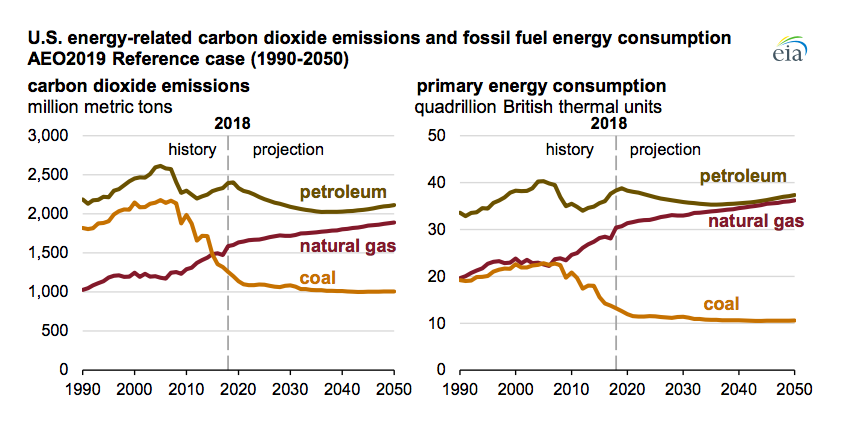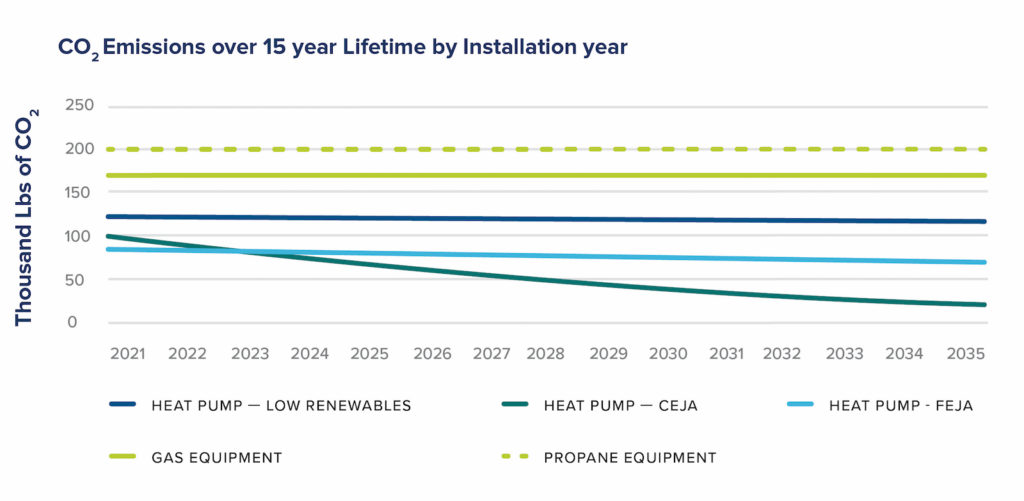African woman sitting on couch in living room alone cools herself with blue handheld fan waved back-and-forth in hot weather at home without air conditioning, airflow relief heat helps feels refreshed (African woman sitting on couch in living room alo

Climate Action is Heating Up in Illinois: Here’s the Missing Piece
Illinois is poised to be a national climate leader. After committing to cut carbon emissions in line with the Paris Climate Agreement, Governor JB Pritzker recently continued his push for climate action with a new set of principles for a clean and renewable Illinois economy. In the state legislature, an impressive coalition of advocates are organizing around ambitious clean energy legislation, like the Clean Energy Jobs Act (CEJA).
These efforts are vital, particularly concrete actions focused on cleaning up transportation and the electric grid. However, without an increased focus on eliminating fossil fuels in buildings, Illinois could fall short if its commitments. New RMI analysis, conducted in partnership with Elevate Energy, shows that electrifying space and water heating in homes is a key tool for reducing Illinois’ carbon emissions and meeting its climate goals.
The Importance of Electrification
Electrifying buildings is a critical element of climate action. Emissions from burning gas across the United States have already surpassed those of coal. The current trend is the opposite of what’s needed. Gas use is increasing, and homes that burn gas for heating are a major part of this consumption.
In Illinois, 62 percent of gas use happens in buildings. Gas and other fossil fuels burned in buildings account for 18 percent of Illinois’ energy-related emissions. These emissions will not decrease at the pace needed to address climate change without a renewable electrical grid paired with deployment of heat pumps.
Source: US Energy Information Administration
Our new analysis shows that improvements in electric heat pump technology and progress in cleaning up the electricity grid provide an effective pathway to meeting Illinois’ climate goals.
Heat Pumps: A Key Decarbonization Opportunity
A heat pump is an energy-efficient heating and cooling system for a home. Electric heat pumps use a small amount of electricity to move heat, rather than generating heat by burning fossil fuels. Electric heat pumps are more efficient than traditional electric heating and completely eliminate indoor combustion, improving indoor air quality.
Our analysis shows:
- Heat pumps reduce emissions: Across a variety of grid decarbonization scenarios (ranging from CEJA-level ambitions to modest levels of renewable energy growth), installing a heat pump instead of a gas or propane system saves emissions over its lifetime. These results are true even before incorporating any impacts of gas leakage and even if Exelon retires some of the state’s nuclear plants.
- Illinois should start incentivizing heat pumps today: Even with the current grid mix, installing a heat pump today will save emissions over the lifetime of the equipment. This is true not only in Illinois but also for 99 percent of the US population. HVAC equipment has a long life and the timeline for cleaning up the grid is short, meaning this is an investment worth making today.
- The more renewables the better: Building decarbonization initiatives centered around the deployment of heat pumps will be improved with more renewables on the grid. Moving to heat pumps extends the impact of this cleaner grid.
Our new analysis follows an earlier study by RMI published in 2018, using 2016 data. The original analysis determined that heat pump technology was not yet an emissions-savings opportunity for Illinois. However, much has happened since this initial study. In 2017, Illinois pass the Future Energy Jobs Act (FEJA), committing to a 25 percent renewable energy portfolio by 2025. Furthermore, coal use has significantly declined and cold weather heat pump technology has improved.
Today, cold weather heat pumps that are paired with energy efficiency interventions can be cost-effectively deployed even in the coldest climates in the Midwest.
Where Do We Start Implementing Change?
State leadership will be key in the national movement to decarbonize buildings. Bold policies like Illinois’ proposed CEJA legislation will enable the deep decarbonization of other sectors, but without addressing fossil fuels in buildings, the state will miss out on a key opportunity to cut emissions and improve health.
The technology needed to electrify buildings exists today. To make the most of a transition to renewable electricity while decarbonizing the building sector, states like Illinois should:
- Leverage supporting policies: Pair renewable energy policies with energy efficiency and building electrification initiatives.
- Set heat pump targets: Set heat pump installation targets and incentives to provide market signals and support grid planning for added electrification.
- Stop investing in fossil fuel infrastructure: Further investment in fossil fuel infrastructure is incompatible with meeting climate goals and should be strongly scrutinized. The failure to do so may lead to billions of dollars in stranded assets that could be instead deployed to incentivize alternatives like efficient electric heat pumps.
- Lead with equity: Electrification of buildings should reach the most vulnerable households first, particularly communities most harmed by the extraction and burning of fossil fuels. Policies and programs should ensure that electrification does not substantially increase costs for low-income households, including the cost of stranded fossil fuel infrastructure.
It is critical that climate leaders like Illinois do not delay actions to promote efficient heat pumps. The transition away from fossil fuel combustion in buildings has immediate climate and health implications that will take time to deploy equitably. States should urgently pursue a building decarbonization pathway while ensuring that historically vulnerable populations are centered in this movement and experience the economic and health benefits related to energy savings, workforce development, and improved air quality.
This work will be critical to ensuring climate action proceeds in tandem with racial and economic justice. As our planet continues to heat up, so should our climate ambitions. Illinois has an opportunity to demonstrate climate leadership and show the carbon saving power of heat pumps.

